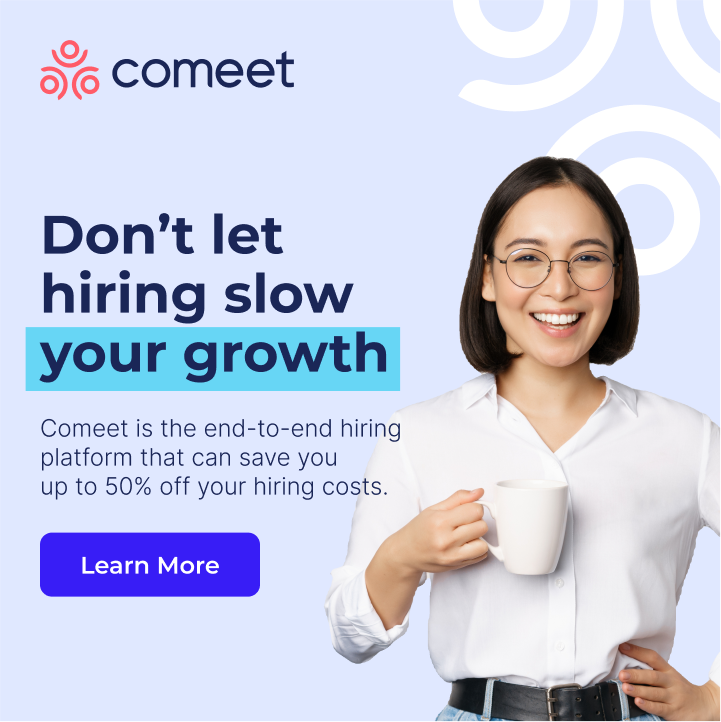For some of us, it might not seem all that long ago when organizational downsizing was all the rage. Remember the push to reduce labor costs and increase profitability at the expense of pretty much everything else? If you can’t recall it specifically, then perhaps you might be more familiar with George Clooney flying all over the Midwest firing people on behalf of corporate America in Up in the Air? That’s organizational downsizing.
Pandemics aside, we’ve pretty much moved on from this trend and become more obsessed in recent times with a new corporate buzzword – streamlining – which refers to improving efficiencies in organizational processes by typically using the latest technologies.
Not quite convinced that there’s a difference? While downsizing is all about reducing headcount, streamlining is all about making the jobs carried out by that headcount more effective and their work processes more efficient and sometimes even more enjoyable.
At its core, streamlining processes and procedures is the most effective way to improve operational efficiency while having a direct impact on the company’s bottom line.
When organizations (particularly tech businesses) think about streamlining, the majority would focus on their tech stack and on ways to save time, eliminate bottlenecks, reduce costs, and improve productivity, communication, and documentation processes within their development teams.
Now, if you’re thinking that this is just going to be another one of those articles providing you with the top 10 hacks to make your workday more productive, I can assure you it’s not. There’s a plethora of those already available at your fingertips.
Of course, it’s worth investing in a project management tool like Asana or Notion, a content management system (CMS) like WordPress, a CRM like HubSpot, a document management system like DocuSign, or a video messaging tool like Loom. But when it comes to streamlining organizational processes, in this piece I wanted to highlight the importance of constantly re-assessing your vendor relationships and other resource partners – to always be on the look-out for the most robust solutions for your business. Could there be a cheaper option? Or, perhaps more importantly, could there be a more flexible solution that you may not have been aware of … until now?
Continuous business improvement and striving for operational excellence starts with ensuring you have relationships with the best vendors, partners, and suppliers; and that the tools or software you have integrated into your business are doing exactly what they need to do and aren’t simply some off-the-shelf solution that seemed to be at the right price point at the time, but are now in fact causing more inefficiencies and frustrations within the team than the benefits you were promised.
Are your vendors Trusted Advisors?
I do a lot of work with organizations on the importance of becoming a Trusted Advisor to their clients. Sure, what I say is typically directed at the ‘other side of the table’, but it’s certainly important to consider here, too. If you have entered into an agreement with a provider, one would hope that they are adding value to you, your team, and the broader organization as opposed to simply granting you (for example) enterprise level access to their platform where they send you an invoice every month or quarter, a notification of a rate increase, or have conveniently added you to their automated monthly marketing nurturing campaign.
Are you simply a user or a subscriber in their eyes? Or are you a truly valuable customer?
One of my favorite books is The Trusted Advisor by David Maister, Charles Green, and Robert Galford. I’ve read it many times and it’s a constant reminder for how you should treat your clients.
So, when you start streamlining your vendor relationships, I would consider the key themes highlighted in this powerful book and ask yourself whether your current providers are focused on a service based, needs based, relationship based, or trust-based partnership. In other words, as a buyer of a particular product or service, are you simply receiving information? Solutions to your problems? Innovative (and bespoke) ideas based on your specific requirements? Or perhaps your provider truly values you as an individual customer as opposed to just the name under a signature on an agreement or statement of work.
How connected do contractors feel towards your organization?
Now let’s turn the tables for a moment and rather than focusing on how your vendors treat you, ask yourself how connected your vendors feel towards you and your business? After all, the term ‘vendors’ certainly includes freelancers and external contractors. And when re-assessing your vendor relationships, you want to focus on those that have truly bought into your vision.
Research has shown that organizations that view their ‘gig workers’ like their full-time team members and treat their vendors like their own employees will receive a higher quality of output and a better level of service in return. On the flipside, companies that view vendors as easily replaceable will most likely not receive anything more than the bare minimum.
I contract to quite a few businesses today and made the decision a while ago to only partner with organizations where I genuinely feel like I am part of their team – whether this means being in regular contact with the founders and team members, being invited to company off-sites, or even just being sent a company t-shirt or other merch. To these businesses I deliver 110%. To those that would rather keep me at arm’s length, want to me reduce my rates, simply flick through project briefs, or aren’t even willing to lock in a regular Zoom call, delivering sub-standard work doesn’t even cross my mind (as it would to many contractors out there). I simply walk away from the business completely. It’s their loss.
Are you receiving customizable solutions from your providers?
As I alluded to earlier, streamlining your supplier partnerships should result in tailored solutions as opposed to a one-size-fits-all offering; and more importantly solutions that will ensure operational excellence and more efficient processes as opposed to employees still having to flick between multiple platforms to manage all their information or different requirements.
A few personal recommendations here:
When it comes to marketing operations and sales operations (revenue operations), you might want to consider partnering with SaaScend to assist with all your campaign automation and attribution. For product strategy, design development and QA, check out TribalScale. And for a #worktech culture platform that truly helps to build connected workplaces by supporting and enabling great teams (as opposed to a standard plug-and-play culture app), book a demo with Cadrelo today.
Of course, when it comes to recruitment, you want an Applicant Tracking System that is integrated with LinkedIn; that keeps candidates engaged and tells you what they really think of your hiring processes; and that has a built-in auto-scheduler to automate interview bookings, thereby improving speed-to-hire without cutting corners. Hello Comeet!
Before you think about streamlining anything
Earlier I mentioned the need to always be on the look-out for the most robust solutions for your business. Whilst cost effective is always good, sometimes a more flexible solution may be what you are looking for.
So, before re-assessing your vendor relationships, do your research, consider your users, and ask your team for feedback not only on existing platforms, but by bringing them into the conversation when considering any new solution providers. Then find out what the implementation or onboarding process is like, what training your team will receive, and what ongoing support will be provided.
Remember, every potential supplier or provider will promise the world. But consider whether they are simply focused on closing the deal or building a longer-term relationship. Are they willing to sit down with you and your team to discuss your current challenges and future needs even if you might realistically only consider changing providers a year from now?
In a lot of the organizational L&D work I do, I often talk about four levels of customer exchange – criminal exchange; partial exchange; fair exchange; or exchange in abundance. Are you feeling ripped off by one of your current providers? Is the service you receive neither here nor there? Are you happy (but not over the moon) with a vendor relationship? Or are you a raving fan promoting the partnership at every possible opportunity?
At the end of the day, streamlining vendor relationships is a win-win, so if you feel like you’re being screwed over by your current provider, or if your attitude towards a vendor is a bit “meh”, it’s time to streamline. If you’re happy but not ecstatic with a partner, tell them you’re considering reassessing the relationship (and watch them up their game!). But if you’re experiencing ‘exchange in abundance’ where you feel your vendor is adding value to your organization and building a trusted advisor relationship, use that partnership as a benchmark for all future discussions.





























